Since its release in autumn 2021, I have been wearing the new Oura Ring Generation 3 (=Gen 3) constantly – 260 nights and days, to be precise.
While I intended to give an update on the new features earlier, I needed to wait as some of the more significant changes took a while to be rolled out globally.
For example, even though Blood Oxygen Sensing was announced in October of last year, it only became available a couple of days ago in July 2022.
However, the wait was worth it, and there is much to discuss.
👉 If you are brand new to Oura, consider reading my Gen 2 review to get a complete picture of the Oura ring. The features of the Gen 2 are still available with the Gen 3.
Look & Feel
The most obvious change about the new ring is that it is only available in one style – called Heritage with a flat top.
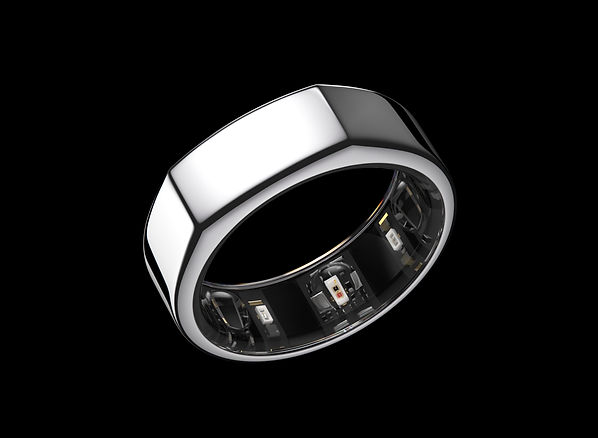
Furthermore, there has been a slight change to their colour scheme; for the new ring, you can only choose between Silver, Black, Stealth, and Gold.
That means that their expensive Diamond ring is no longer available. However, a partnership with Gucci has provided a luxury version of the Oura ring for those who prefer a bit more exclusivity.
Keeping in mind that the ring is packed with technology, the ring made of titanium is with 4-6 grams a lightweight. Otherwise, there has not been a notable change to the look & feel.
Partnerships
Besides the hardware collaboration with Gucci, Oura announced two further partnerships to increase the value for their customers. Here is an overview of their partnerships so far:
- Gucci (Announced May 26th, 2022)
- A special edition of the Oura Ring combines the technology of Oura with Gucci’s Italian style.
- Strava (Announced July 14th, 2022)
- Oura members can import their Strava activities into Oura and share their Oura activities into their private or public Strava feed, creating a more comprehensive activity offering.
- Natural Cycles (Announced August 2nd, 2022)
- The Natural Cycles app automatically syncs the temperature trend data from the Oura Ring during sleep and thus eliminating the need to take the temperature with an oral thermometer each morning.
As I am not using Strava or Natural Cycles, I can´t say much about either but having the applications exchange data is a huge plus for all subscribers and comparable with the value of the Apple Health or Google Fit integration.
Announced features
When Oura launched its new ring in October 2021, the company announced the following enhancements:
- Daytime & Workout Heart Rate
- Sp02 Sensing & Improved Sleep Accuracy
- 7 Temperature Sensors
- Period Prediction
- In-App Guidance and Insights
Most of the features were not available until recently, but now we can have a closer look at what it is all about:
Daytime Heart Rate
The ring measures your daily heart rate from midnight to midnight, with measurements happening every five minutes.
The Oura App shows the daytime heart rate as a graph with two elements, the heart rate bars and the average line, on the start page.
- The heart rate bars are 30-minute timeslots.
- A full bar indicates successful measurements every five minutes, and two bars on top of each other indicate that there were moments where the ring couldn´t detect the heart rate for whatever reason (ring not worn or due to movement).
- A green colour indicates restorative time – that´s usually my morning coffee time.
- The average line presents your average heart rate as a line on top of the bars and helps you follow the heart rate trend throughout the day.
- When the line is dotted, the ring could not detect the heart rate (ring not worn or due to movement).
See the slider to get a visual impression of what is shown:




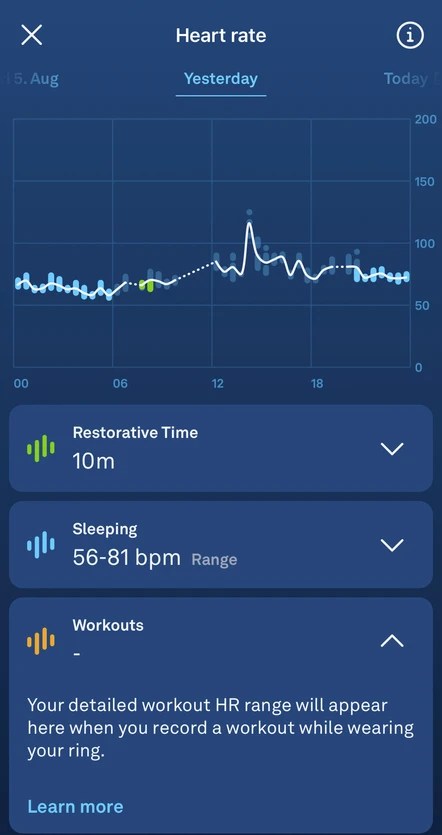
Workout heart rate
The workout heart rate is a feature I was waiting for, only to realise that I do not need or use it as I conveniently start and track any workout via my Apple Watch – with a full and automatic data sync to the Oura App. There the workouts are tagged as „Imported from Health“:
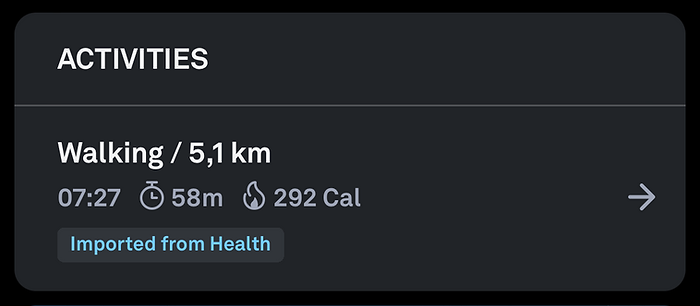
That means starting and tracking Workout Heart Rate via the Oura App is redundant for me.
However, this feature is brilliant if you do not use another fitness tracker or can´t wear it for some reason. The activity then is shown like this on your dashboard:

When tapping on it, you´ll get some more info about it incl. a map, workout intensity and the splits for average speed per kilometre (not shown on the below screenshot):
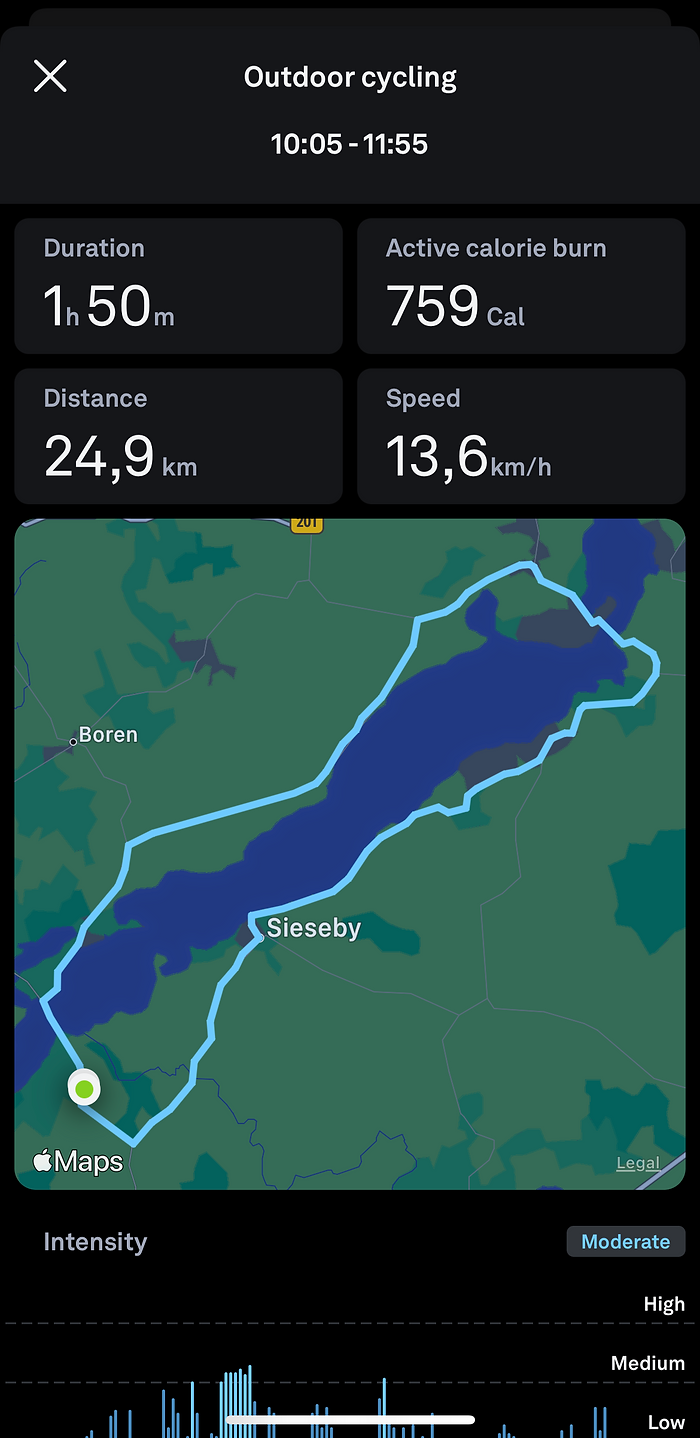
Sp02 Sensing & Breathing regularity
SpO2 Sensing is the newest feature released and has only been available for a few days. Enabling the feature is optional as it can influence the charging rhythm of the Oura ring. I have it enabled and need to put the ring on the charger every four days. That´s acceptable.
Once enabled, you´ll get every morning an insight into your average oxygen saturation and breathing regularity within the Sleep tab of the app:

Keeping in mind that low blood oxygen levels can lead to serious health complications, I find getting a daily measure highly beneficial.
I can´t say too much about the announced improved sleep accuracy and find the accuracy indeed very solid – as I did with the Gen 2 ring.
Seven temperature sensors & Period prediction
As I do not know how to count the sensors, I simply believe Oura that there are seven now.
For the temperature part, you still do not get the exact temperature each morning, but your average temperature relative to your baseline. While the baseline temperature is never communicated, you get the info on how much off you are from that baseline (in Celsius or Fahrenheit based on your settings) in the form of +0,2°C or -0,2°C (if 0,2°C is the difference to your baseline). You´ll learn that your cycle (if you are a woman), daily routine, and other factors can influence your temperature. It´s pretty interesting!
For the Period Predication, I have to say that I have my doubts. You need to tell the app the regularity of your cycle and its length, and then the app tells you at some point during the month that your period might start in 5-7 days. I don´t feel it is based on the temperature but on the cycle length, which I communicated to the app. But hey – I am happy to get proven wrong. In any case, I am at this stage not too convinced that the predication is based on bodily measures. But to be fair, it is still in beta mode.
In-app guidance & Insights
The app is packed with info on the different measures, so you do not have to be a doctor to use and understand your Oura ring and what it tells you.
Everything the ring measures is explained in the app, and some topics even provide a link to more information.
As an example, you see your HRV (=Heart Rate Variability) in the app each morning, and if you are not too sure about what it is, simply tap on the little info icon, and you´ll be prompted with a short but useful explanation:

Generally speaking, the look & feel of the app is getting better with each release and allows for more customisations to get the best out of it. Moreover, new tiles with new insights are added now and then and -at least until now- without the app getting messy or hard to read.
Another new feature is the Ouraview -a quarterly insight- that I enjoy a lot:
Playfully it summarises your past three months highlighting your achievements and routines on a couple of slides – the Ouraview allows you to compare yourself with friends having an Oura ring too. To give you an idea of that feature, here are some slides from my first Ouraview:

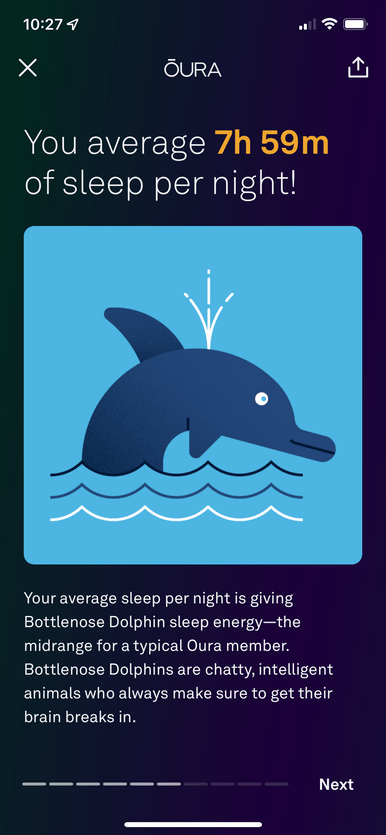
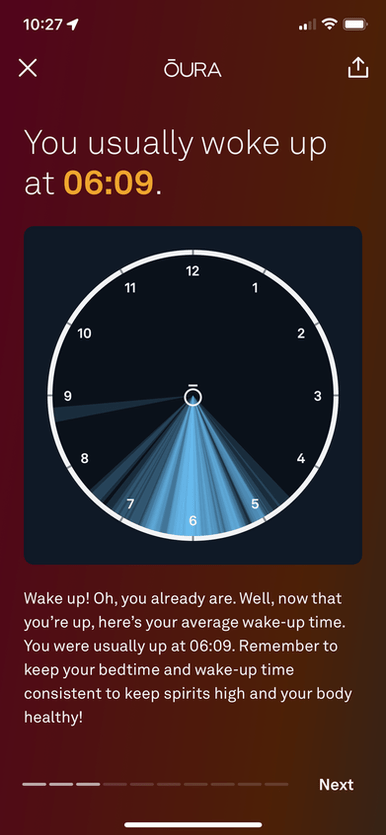
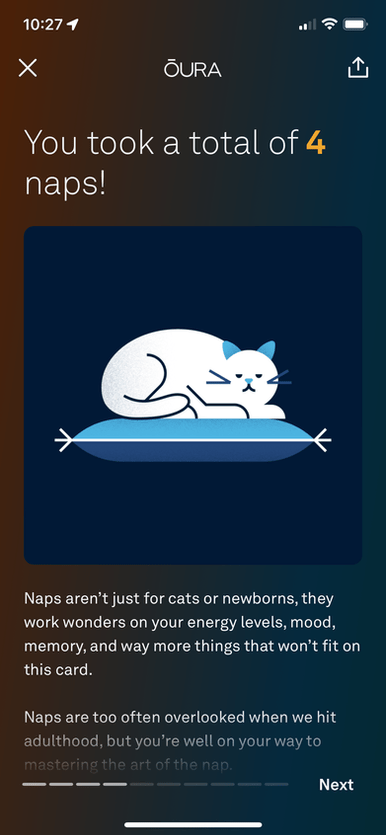


Pro-Tippif you want to re-read your Ouraview a couple of days later, navigate back to July 1st (this was the first release of the Ouraview). You can do this by tapping on a date on top of the app and then choosing July 1st. In theory, the next Ouraview will come on October 1st, then January 1st, April 1st and then again on July 1st – so the date you need to go back to changes over the cause of the year and is dependent on when you started using the Oura ring.
Guided meditations
Using Oura might eradicate your need for other stand-alone apps for meditation.
The new Explore tab allows subscribers to access a decent library of guided meditations and audio sessions. As a plus, the app provides you with post-session insights to see how your body responds to taking a meditation or breathing exercise.
While the offering in other apps such as Headspace or Balance is broader, it can be a great starting point for those who have not been using meditation offerings before or even a complete coverage if you do not need a lot of different sessions.
Closing remark
I do not regret upgrading to the new Generation 3 Oura Ring, and I am keen to see what else Oura is working on.
Admittingly, it was not obvious for some time why having upgraded was a good idea. For months, there was no real difference between the Gen 2 and the Gen 3 as many features had only been released months after the initial launch. But meanwhile, we hit the mark where the Gen 3 is worth its salt and its strength become visible. That being said, paying a few Euros each month for a subscription to receive detailed insights is money well spent.

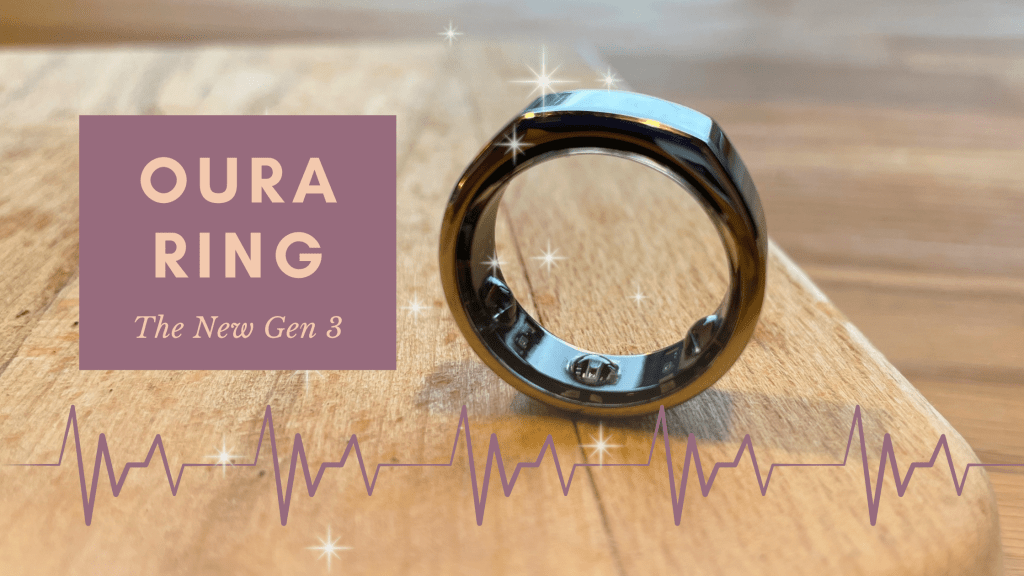
Hinterlasse einen Kommentar